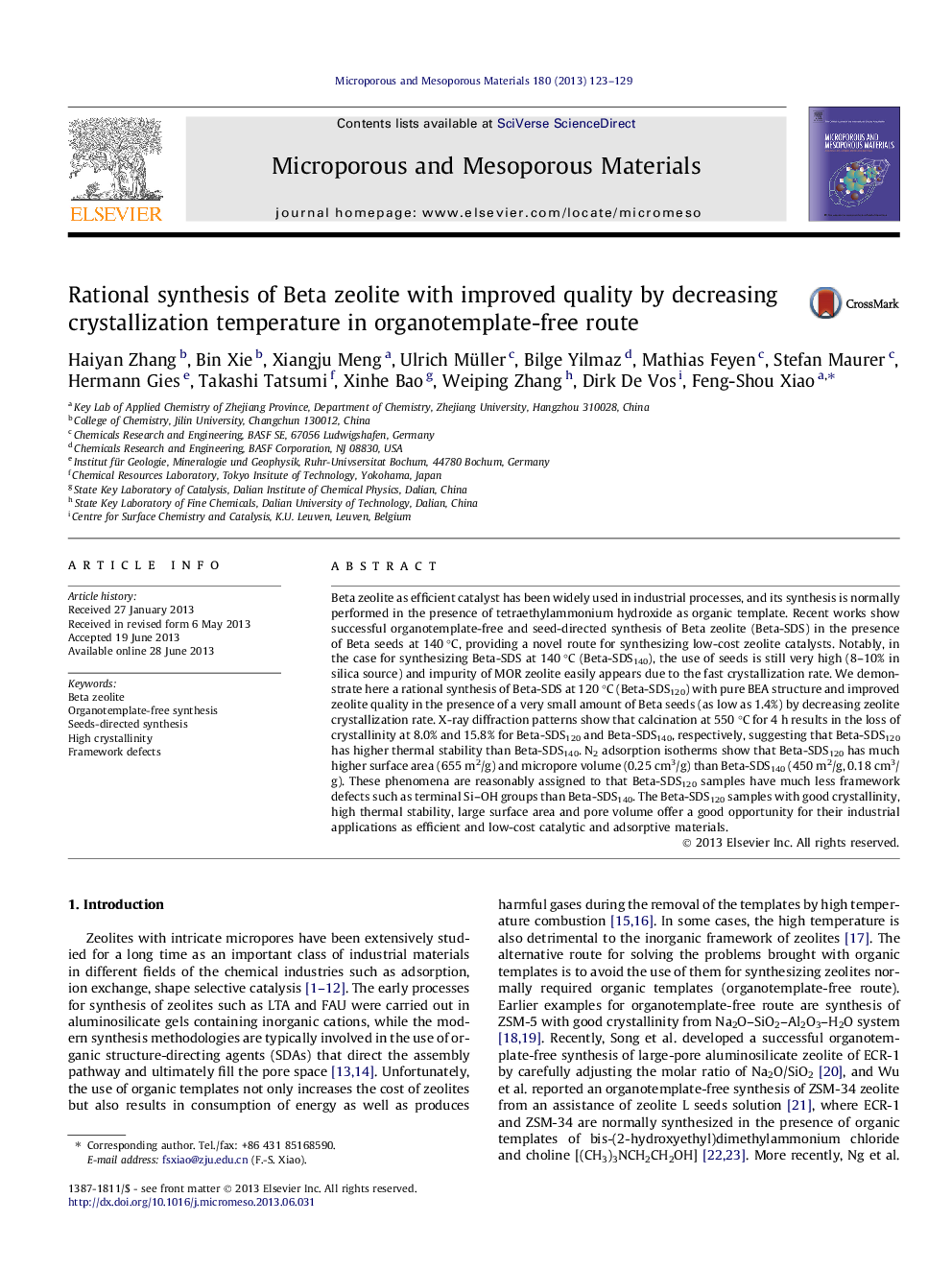| Article ID | Journal | Published Year | Pages | File Type |
|---|---|---|---|---|
| 73250 | Microporous and Mesoporous Materials | 2013 | 7 Pages |
•Beta-SDS zeolite has been rationally synthesized at 120 °C using 1.5% wt. Beta seeds.•Beta-SDS120 zeolite has higher crystallinity and thermal stability than Beta-SDS140.•Beta-SDS120 has higher surface area and micropore volume than Beta-SDS140.•Beta-SDS120 samples have much less framework defects than Beta-SDS140.
Beta zeolite as efficient catalyst has been widely used in industrial processes, and its synthesis is normally performed in the presence of tetraethylammonium hydroxide as organic template. Recent works show successful organotemplate-free and seed-directed synthesis of Beta zeolite (Beta-SDS) in the presence of Beta seeds at 140 °C, providing a novel route for synthesizing low-cost zeolite catalysts. Notably, in the case for synthesizing Beta-SDS at 140 °C (Beta-SDS140), the use of seeds is still very high (8–10% in silica source) and impurity of MOR zeolite easily appears due to the fast crystallization rate. We demonstrate here a rational synthesis of Beta-SDS at 120 °C (Beta-SDS120) with pure BEA structure and improved zeolite quality in the presence of a very small amount of Beta seeds (as low as 1.4%) by decreasing zeolite crystallization rate. X-ray diffraction patterns show that calcination at 550 °C for 4 h results in the loss of crystallinity at 8.0% and 15.8% for Beta-SDS120 and Beta-SDS140, respectively, suggesting that Beta-SDS120 has higher thermal stability than Beta-SDS140. N2 adsorption isotherms show that Beta-SDS120 has much higher surface area (655 m2/g) and micropore volume (0.25 cm3/g) than Beta-SDS140 (450 m2/g, 0.18 cm3/g). These phenomena are reasonably assigned to that Beta-SDS120 samples have much less framework defects such as terminal Si–OH groups than Beta-SDS140. The Beta-SDS120 samples with good crystallinity, high thermal stability, large surface area and pore volume offer a good opportunity for their industrial applications as efficient and low-cost catalytic and adsorptive materials.
Graphical abstractFigure optionsDownload full-size imageDownload as PowerPoint slide
